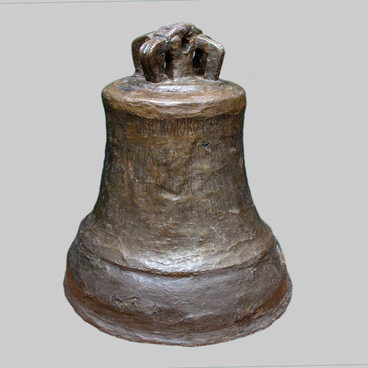The icon ‘Christ the Great Hierarch’ is an iconographic image, that is, painted by the canon. Here, Christ is depicted in royal or archdiocesan robe, embroidered with gold, and wearing a crown in the form of a Royal crown. Messiah holds the regalia of Royal power in his hands — scepter in the right hand, the orb in the left hand. There are several variants of the names of this icon — ‘King of Glory’, ‘Great Hierarch the Pantocrator’, ‘The King of Kings.’ The plot for the image is taken from the Holy book of the Apocalypse, which heralds the second coming of Christ in the glory of the King The Judge.
In iconography, this image is sometimes supplemented by images of the Most Holy Mother of God and the prophet John the Baptist. The icon may also contain angels who symbolize sacred benefits, protect people and bring faith and hope to their lives.
The image of the ‘God Almighty’ entered the funds of the Tobolsk Museum no later than mid 1939. Researchers suggest that until this moment the icon had been kept in the Tobolsk Church ancient archives, disbanded in the 1920s. Before the restoration, it was covered with a layer of white oil paint.
The icon was made by the craftswomen of the Ioanno-Vvedensky Convent in the technique of gold embroidery, a hand-made decorative embroidery with metal gilded and silver threads.
In the middle of the 19th century, with the formation of Ioanno-Vvedensky Convent in Tobolsk, various workshops appeared at the monastery, which provided the needs of the Siberian region. Women of the noble class, who went to the monastery, mostly were appointed as gold-embroidery seamstresses: nuns were embroidering the church’s robes, religious banners, icon settings, elements of Church decoration. Grand Lords, the sons of Emperor Alexander II visited Tobolsk in the 1860s and 1870s. During this visit, abbess Dorothea presented a gold-embroidered icon of St. John the Baptist, velvet shoes, and a notebook made of crimson velvet to Grand Lord Vladimir Alexandrovich as a gift. To Grand Lord Alexey Alexandrovich — a gold-embroidered icon.
The traditions of gold embroidery are still preserved in the Ioanno-Vvedensky Convent today.
In iconography, this image is sometimes supplemented by images of the Most Holy Mother of God and the prophet John the Baptist. The icon may also contain angels who symbolize sacred benefits, protect people and bring faith and hope to their lives.
The image of the ‘God Almighty’ entered the funds of the Tobolsk Museum no later than mid 1939. Researchers suggest that until this moment the icon had been kept in the Tobolsk Church ancient archives, disbanded in the 1920s. Before the restoration, it was covered with a layer of white oil paint.
The icon was made by the craftswomen of the Ioanno-Vvedensky Convent in the technique of gold embroidery, a hand-made decorative embroidery with metal gilded and silver threads.
In the middle of the 19th century, with the formation of Ioanno-Vvedensky Convent in Tobolsk, various workshops appeared at the monastery, which provided the needs of the Siberian region. Women of the noble class, who went to the monastery, mostly were appointed as gold-embroidery seamstresses: nuns were embroidering the church’s robes, religious banners, icon settings, elements of Church decoration. Grand Lords, the sons of Emperor Alexander II visited Tobolsk in the 1860s and 1870s. During this visit, abbess Dorothea presented a gold-embroidered icon of St. John the Baptist, velvet shoes, and a notebook made of crimson velvet to Grand Lord Vladimir Alexandrovich as a gift. To Grand Lord Alexey Alexandrovich — a gold-embroidered icon.
The traditions of gold embroidery are still preserved in the Ioanno-Vvedensky Convent today.



